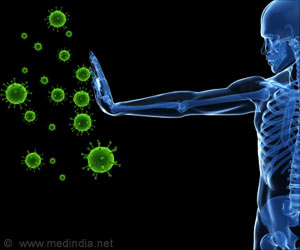Detailed report of the 3rd World Congress of Science and Medicine in Cricket (WCSMC) held at Barbados from the 4th to 7th April 2007.
The 3rd World Congress of Science and Medicine in Cricket (WCSMC), which is endorsed by International Council of Cricket (ICC), was hosted in Barbados from the 4th to 7th April 2007.
Dr Rajat Chauhan, a Sports and Exercise Medicine consultant at the Manipal Hospital, Bangalore in southern India, attended this conference as a faculty from India.These scientific meetings are held at the same venue as the world cups, with England and South Africa having hosted them in 1999 and 2003.
The conference sought to arrive at a scientific understanding of why certain countries are doing well and dominating the arena of cricket while others have lagged behind over the years. The countries that are ending at the bottom of the league have few specialists in this area in comparison to some of the teams that are emerging at the top of the league.
During the 3rd WCSMC the number of representatives from different countries were as follows: Australia- 14, UK- 9, South Africa- 8, West Indies – 1 and India-1. Australia, South Africa, New Zealand and England all have institutes of sports medicine that aim to better cricketing performance. Interestingly, these four teams have been at the top of cricketing league.
In countries such as India, Pakistan, West Indies and Bangladesh there is very little scientific research being done on cricket and very few papers are presented or published. Australia's dominance in the last few world cups can be attributed to an extent, to the maximum utilization of science, medicine and technology to improve their performance.
In Australia, like in India, cricket is a very popular sport. In organized cricket programmes a total of 410,919 people participated in 2003-2004 and of these 70% were under 18 years. Australia has been using video analysis of the game long before any other nation started it. The players constantly benefited from the breakthroughs in technology, science and medicine in cricket through their institute and trainers.
Aim of the Congress:
2. To provide a forum for integrating knowledge from the contributing sciences which address key areas in the prevention and management of cricket injuries and the enhancement of performance.
3. To identify those areas where our understanding is incomplete and to encourage discussions of the challenges that face all involved in the advancement of the game of cricket.
4. To provide a forum for the dissemination of scientific information relating to cricket.
In brief it has aimed to increase the awareness and understanding of the game, thus raising the standards of support provided to cricketers around the world. The congress in Barbodos was supported by the pharmaceutical Pfizer Inc and Dr. A. Llewellyn Harper was the chairman of the conference.
Is there a lessons to be learnt for countries such as India ?: To get at the larger picture, the BCCI and the cricket pundits in India need to seriously look at the deliberation of what emerged from this specialized congress. It should also seriously consider starting an Indian Institute of Cricket Science and Medicine on the same lines as Australia.
Dr Chauhan, a sports medicine consultant from Bangalore was the sole representative from India at the conference. Dr.Chauhan though present at the 2nd WCSMC, but was representing England as he was working in London at that time. Surprisingly only a dentist represented India during that conference.
Dr.Chauhan presented a keynote lecture on 'Dysfunctional Backs in Cricketers' and leading the Workshop on 'Backs'. He was on the panel on the future of Cricket Science and the future of 4th WCSMC. Dr. Chauhan would be the chairman of the 4th WCSMC that is to be held in the sub-continent in the future.
Interesting presentations from the congress: Few interesting papers that emerged during the congress were communicated to Medindia through Dr.Chauhan. This is the gist of the discussion that took place at the congress:
Batting skills:
* The heads of the skilled batsmen were further forward in comparison to the less-skilled batsmen.
* Batsmen should be encouraged to adopt a trigger movement, prior to ball release.
* This could assist batsmen in batting rhythm and timing.
Late Bob Woolmer, who had been a great bridge between the scientific fraternity in cricket and its application in real time cricket had said in 1993, 'Batting rhythm is created by making feet movements fractionally before the bowler releases the ball'. This novel idea was put to effective practice by the legendary Sir Donald Bradman and he said something similar in 1958.
On doing an Electro-encephalogram (EEG) on batsmen it was found:
* Skilled batsmen were very calm during the run-up of the bowler and all their concentration was targeted to the fraction of that moment just prior the ball was released by the bowler.
* This maybe the result of a better tuned mental state leading to better batting performance.
* There is scientific evidence for the role of meditation or yoga in sports.
* Improving the mental state of players is important to get the best results for a team.
In a study which was looking at visual cues in cricket batting, the impression of the study indicated that:
* Skilled players were able to pick (and use) important information earlier than unskilled players.
* The skilled batsmen depend on advance cues and ball flight information while batting.
The methods described in this study may be used to identify emerging batting talent, different aspects of visual input to batting and the efficacy of interventions on batting performance.
Arm Action and Bowling:
The presence of illegal bowling actions in cricket is a very contentious issue.
* Since 1995 - 28 bowlers have been reported
* It is not possible for umpires to conclusively detect an illegal delivery with the naked eye.
* Umpires would need to be positioned in three places at the same instant to view the full range of elbow extension from arm horizontal to ball release action, to cite if the delivery was incorrect and illegal.
* Similarly with 2D video footage, the match referee would have to view images of each delivery from cameras positioned in the same arc relative to the bowler, virtually instantaneously.
To complicate matters further, these positions will probably be different for each type of bowler.
Brief correlation with stats and physical development: Looking at statistics,
* All test playing nations (except Sri Lanka) have scored their highest ODI scores in last two years.
* They have scored 76 more runs than the highest scores for individual teams in 1980s.
* There is a significant correlation between upper body strength and limited over batting performance but no such relationship existed for the 4 or 5 day game.
* There should be a greater focus on this aspect of specialization between 1 – day and 4 - day batsmen.
* There should be greater emphasis on upper and lower body dynamic strengthening exercises.
Dr.Chauhan feels that for long term development of cricket in the sub-continent more research into the game from India is required and the feedback made available to players as quickly as possible. After all 79% of total cricket revenue in the world comes from India.
Source-Medindia
RC/L






